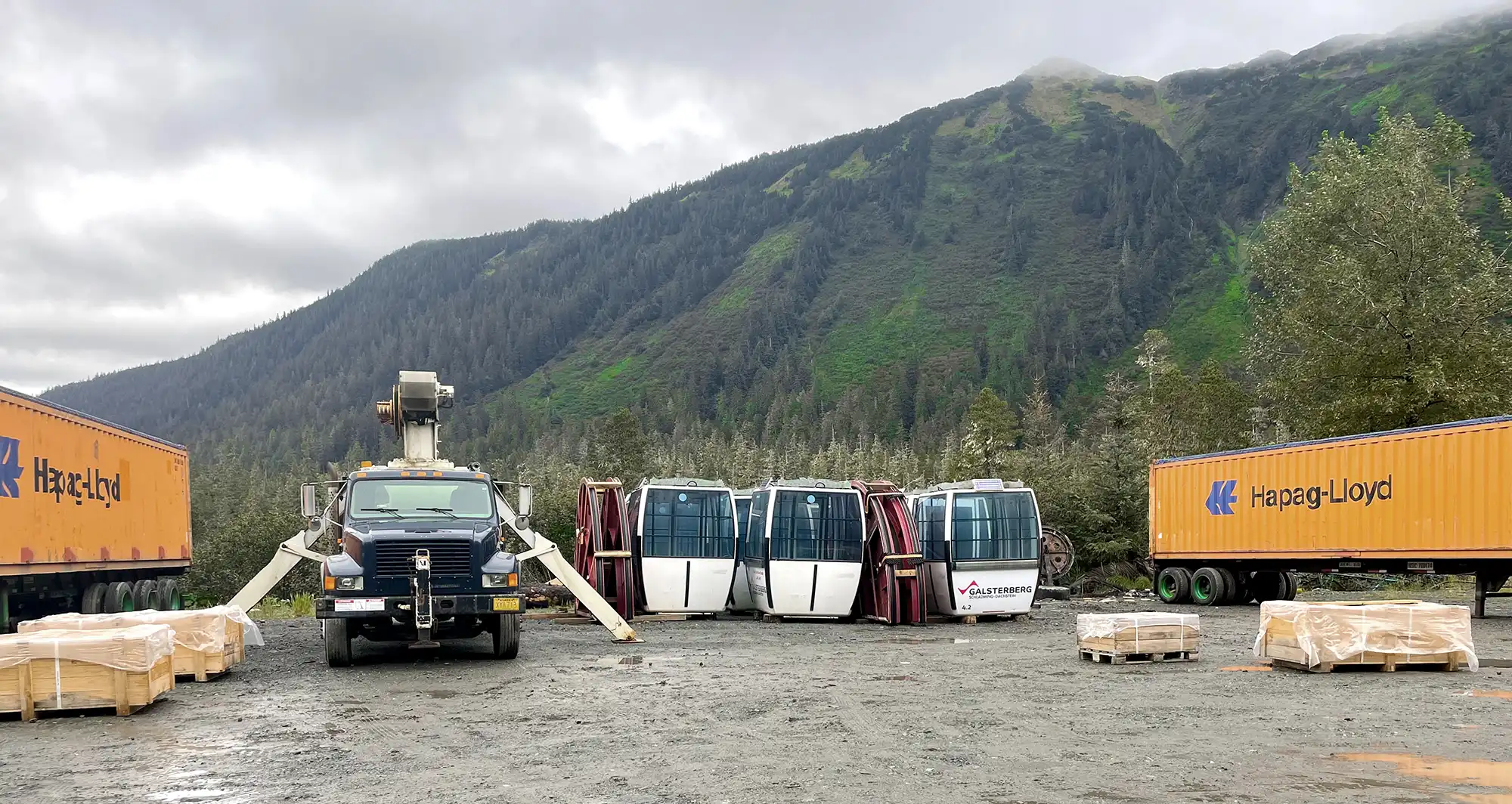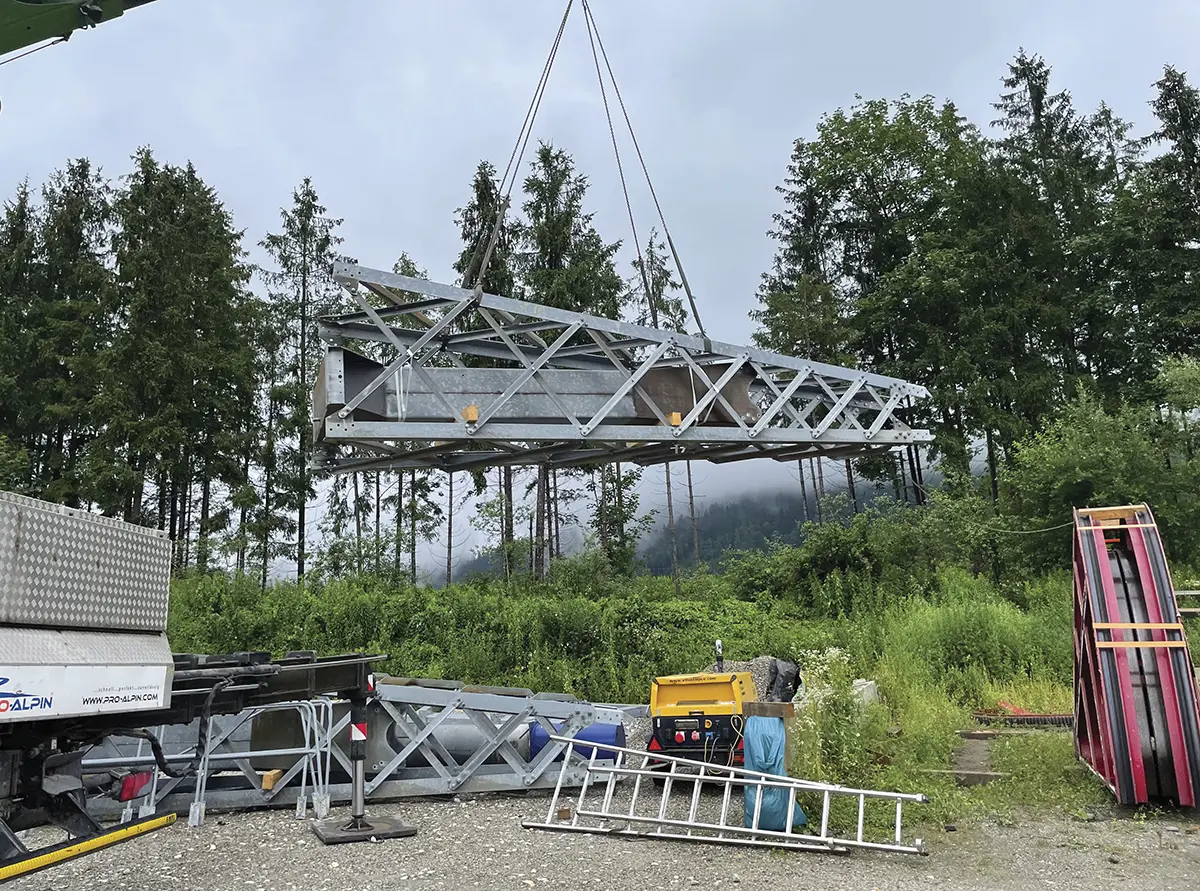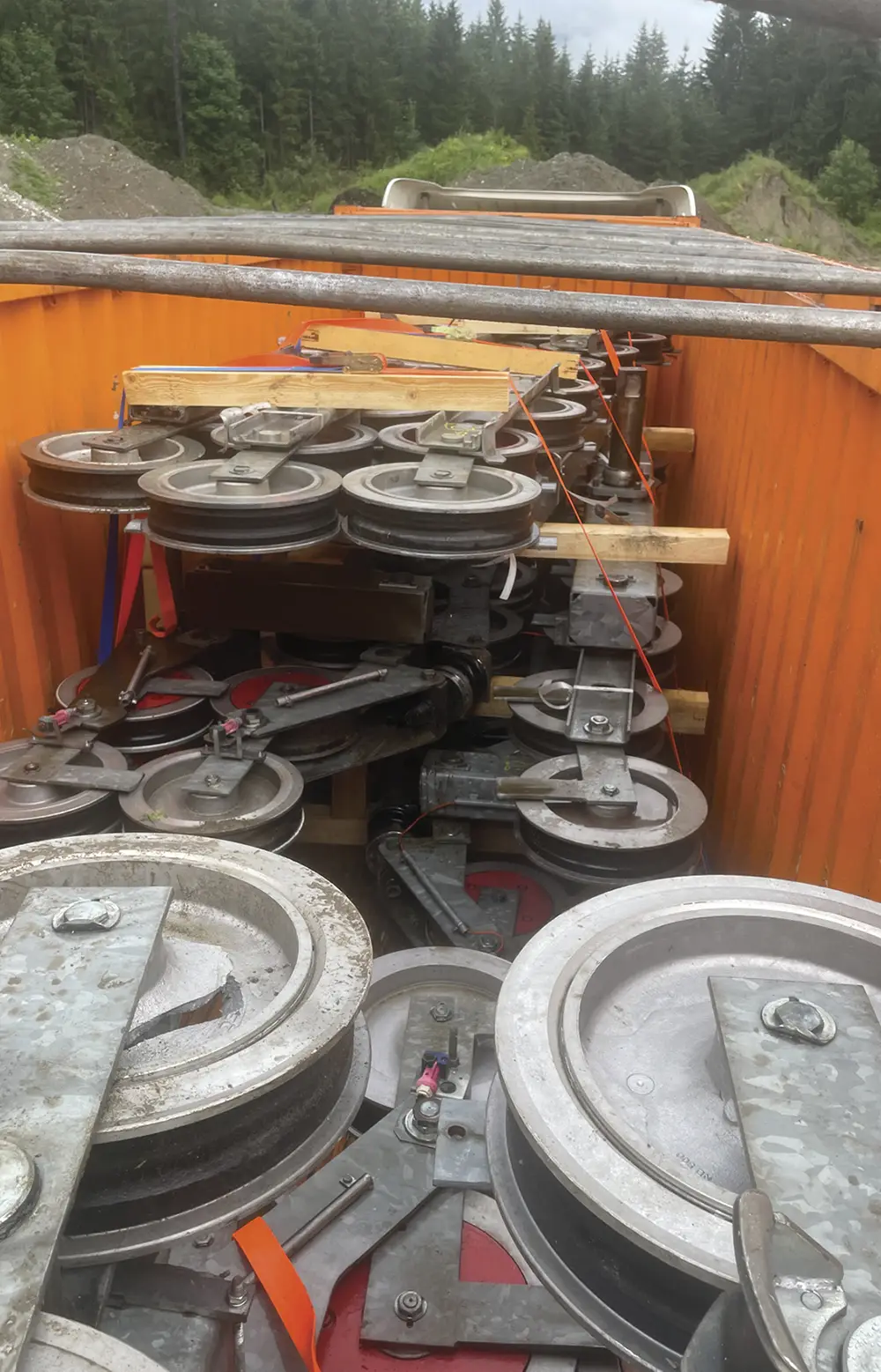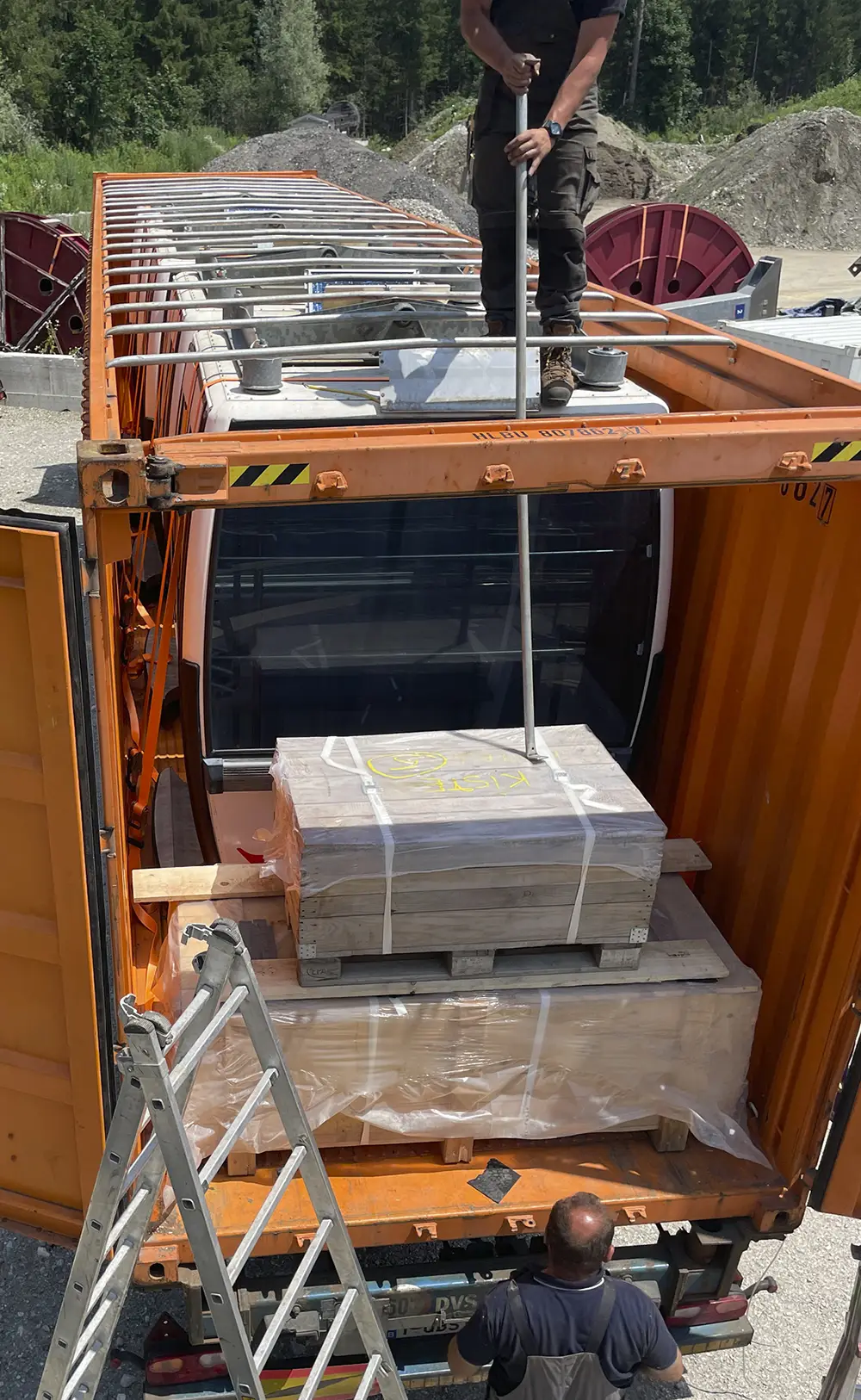
aglecrest Ski Area and the City and Borough of Juneau worked with Lynden Logistics to launch a gondola project that will showcase breathtaking views, provide easier access to high alpine areas, and offer more memorable experiences for people visiting Alaska’s capital city.
The project began in April 2022 when Lynden coordinated the transportation of an Austrian gondola to Juneau. Once it is fully assembled, the gondola will be able to carry passengers up a 7,000-foot traverse—year-round and inside cozy cabins—to the top of Eaglecrest Ski Area on Douglas Island.
“This is going to be a true game changer,” says Eaglecrest general manager Dave Scanlan.
Six years ago, Juneau welcomed approximately 1 million cruise ship visitors. That’s enough to keep established tour operators as busy as they want to be, Scanlan says. Three years ago, that number jumped to 1.3 million, and this summer Juneau is expecting 1.6 million.
“In a place like Juneau, it’s complicated to have a location that can have high-capacity visitor experience,” Scanlan says. “You need the right kind of components, like road access, parking, commercial water treatment system, and septic.”
Eaglecrest has it all, Scanlan says, so the city of Juneau saw purchasing a gondola as an opportunity. At a cost of $2.5 million for the purchase, transportation, and initial design of the used gondola, the price was right. A brand-new gondola that offers the same capability would have cost $25 million to $30 million, Scanlan says.
“The pulsing-style gondola that we purchased from Austria is a simplistic machine with few electronics and moving parts in the loading terminals, which reduces the ongoing operating and maintenance costs significantly,” he says.



“There were many people involved and a lot of coordination to ensure this project was successful,” says Brandie Holmes, international operations manager for Lynden Logistics.
In April 2022, Scanlan worked with a team for two weeks to deconstruct the gondola. When Lynden Logistics arrived with twenty-one hard-to-find open-top containers, more than 445,500 pounds of material were loaded into them.
“They are not as prolific as regular containers,” Holmes says.
The gondola pieces are irregularly shaped, so the open-top global shipping containers were the only containers that would work. All the pieces had to be loaded through the top, using a boom crane. Scanlan likened it to an oversized game of Tetris.
“It was an intense process,” says Scanlan.
From Galsterberg, the containers traveled roughly 700 road miles to Rotterdam, a major port city in The Netherlands, before crossing the Atlantic Ocean and arriving in Norfolk, Virginia. In the Lower 48, they traveled by rail to Seattle. From there, they were loaded onto an Alaska Marine Lines barge headed for Juneau. Then they were unloaded onto trucks, which arrived at Eaglecrest on September 12, 2022.

Sean Boily, Northwind Architects
Scanlan couldn’t say enough about Lynden’s support throughout the journey.
“They took on this intense logistical challenge, making this shipment work for us,” he says. “They did all the point-to-point logistics and found us very specific containers that we needed.”


Northwind Architects, a firm based in Juneau, will take the lead consultant role. Its responsibility is to execute all the engineering and design duties required for the installation and operation of the gondola system, Scanlan says.
Six subcontractors will work under Northwind’s leadership: Associated General Contractors of Alaska members PND Engineers, Inc. for structural and geotechnical work and RESPEC for civil, electrical, and mechanical engineering, along with non-member companies 57 North as a land surveyor, Corvus Design, Inc. for wetland delineation, and SCJ Alliance for gondola engineering.
“The first phase is trying to get the pieces anchored to the mountain,” says Sean Boily of Northwind Architects. “The next hurdle will be getting the gondola re-engineered for the mountain we have. The real challenge will be for the general contractor to build it. They’ll have to get to the top of the mountain with drilling rigs and drill into the bedrock to get these towers tied in, plus helicopter concrete and fuel up the mountain.”
Despite the upcoming challenges of this project, Boily is excited for Eaglecrest’s future for both cruise ship visitors and winter enthusiasts.
“There are all sorts of cool reasons to do this project,” he says. “The whole thing is geared around creating year-long access to the mountain.”